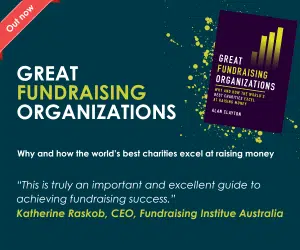Addressing psychological needs of donor critical for improving fundraising says report

Insights into the development of relationship fundraising from both academic and practitioner perspectives have been revealed in a new report from the Institute for Sustainable Philanthropy.
Released today, Fundraising 3.0 is authored by Dr Kathryn Edworthy, Prof Adrian Sargeant and Prof Jen Shang. It explains how to double giving by making small changes to nonprofit communications. It begins by charting the professional and academic development of the concept of relationship fundraising and then outlining the need for an additional approach that focuses on addressing the psychological needs of the donor and the impact that fundraising can have on them as a person.
This lens sees fundraising not just as the raising of money, but, the Institute for Sustainable Philanthropy (ISFP) says, ‘the stewarding of the human capacity to love’.
Advertisement
Professor Shang commented:
“We have tended to look at giving through the lens of altruism. Our research shows that giving may be better regarded as presence of self rather than its absence. Properly caring for that self and its capacity to love, is at the heart of our approach.”
The report demonstrates that this switch in thinking is about more than semantics; donors exposed to communications designed by fundraisers who see their role as raising money will have a very different giving experience from those who are exposed to teams whose function is to grow love. It’s this approach that the ISFP calls Relationship Fundraising 3.0.
The report also maps a series of concepts that can form the core of this approach and includes a look at four years of experiments with fundraising communications that show how uplifts in excess of 100% have been achieved with real world giving.
It concludes by exploring the implications of the work and suggesting how the current fundraising paradigm may need to change; away from a focus on money to a focus on the donor and their identity, wellbeing and love.
Professor Adrian Sargeant commented:
“It is hard to understate the significance of these results. If increases in giving of over 100% can be achieved by changing only a few words in solicitations, imagine the impact of a more pervasive approach that drips our learning across all the communications an organisation might generate.”
Dr Edworthy added:
“The growth in giving we deliver is primarily achieved by enhancing response rates, so what is particularly exciting here is that we have a solid way to expand participation and reduce the decline in giving that has recently been reported.”




